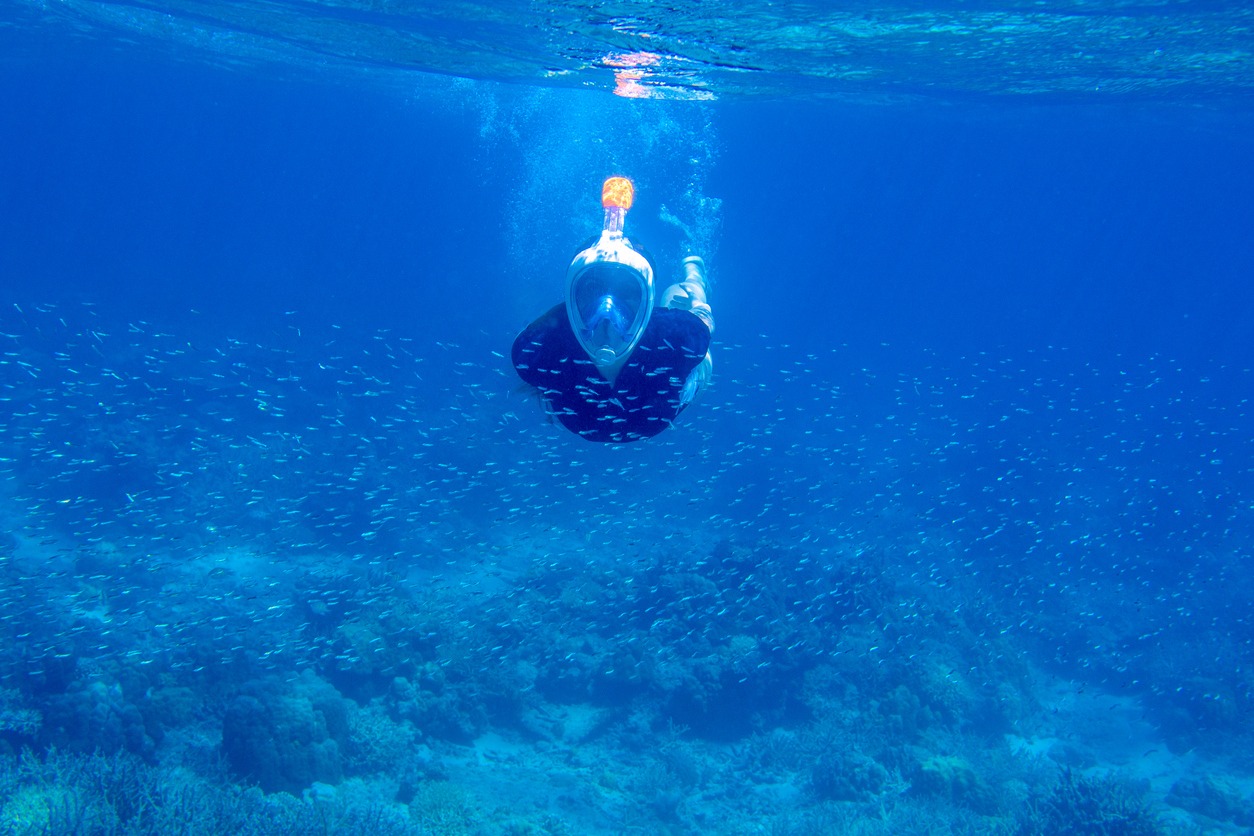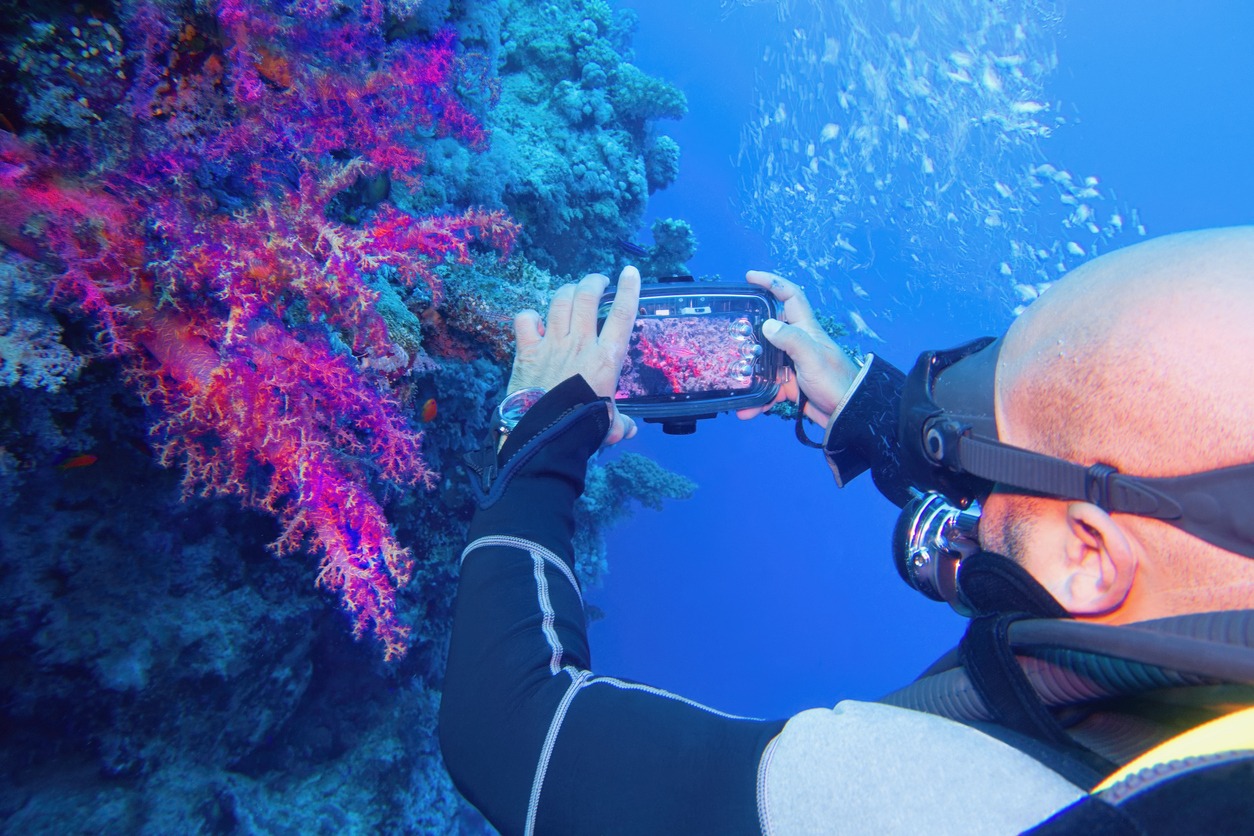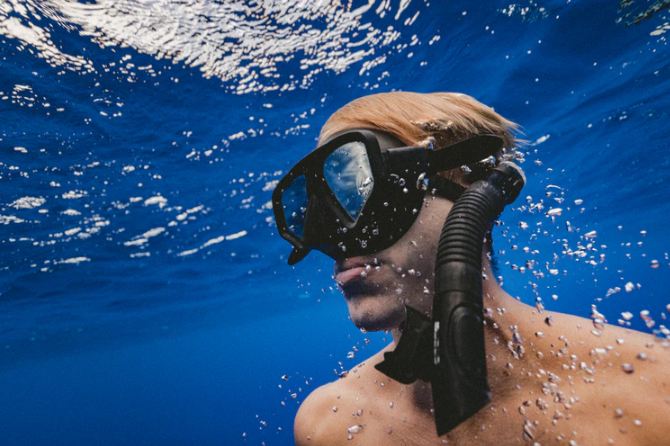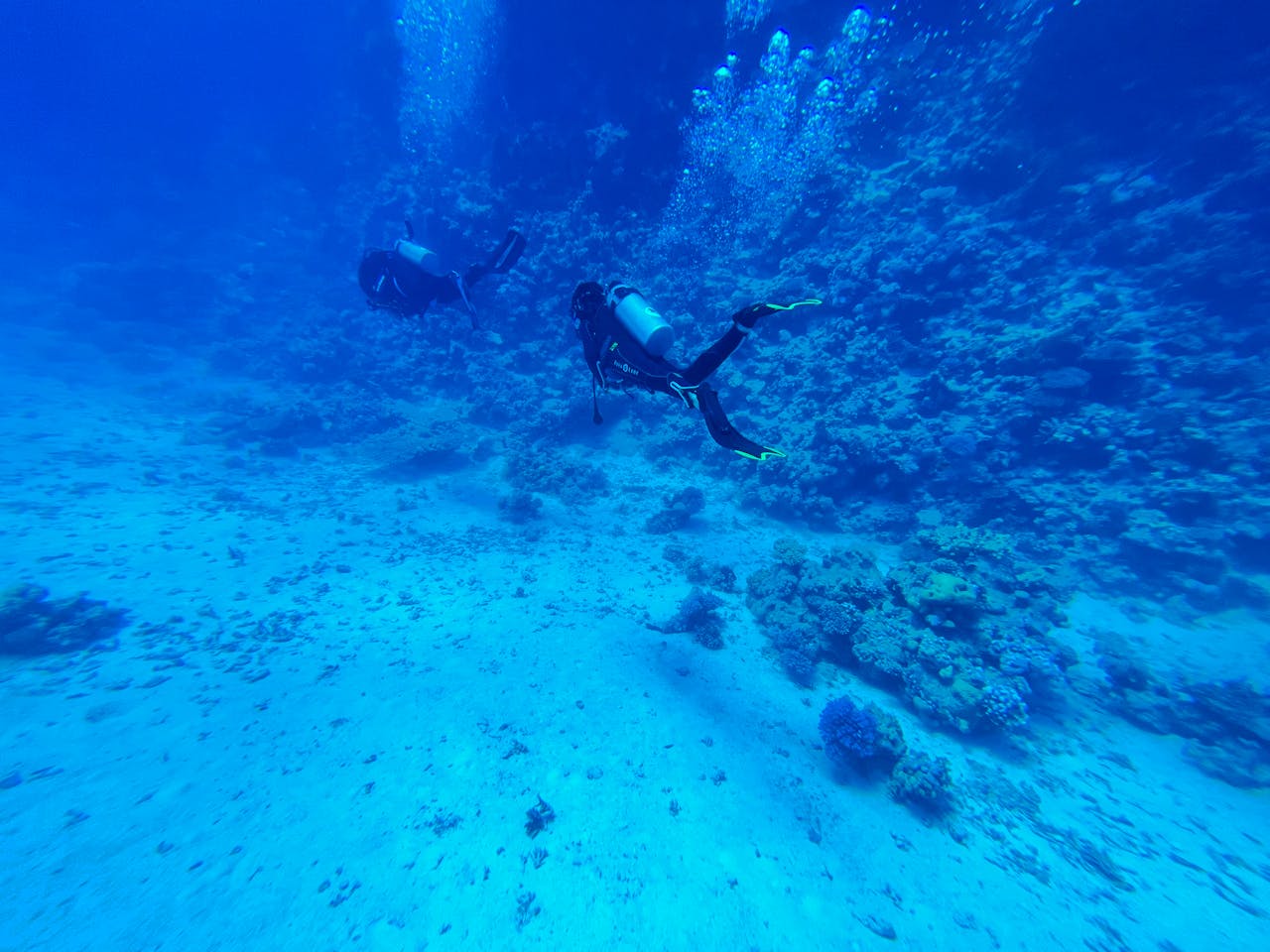Avoiding Common Mistakes While Snorkeling as a Beginner
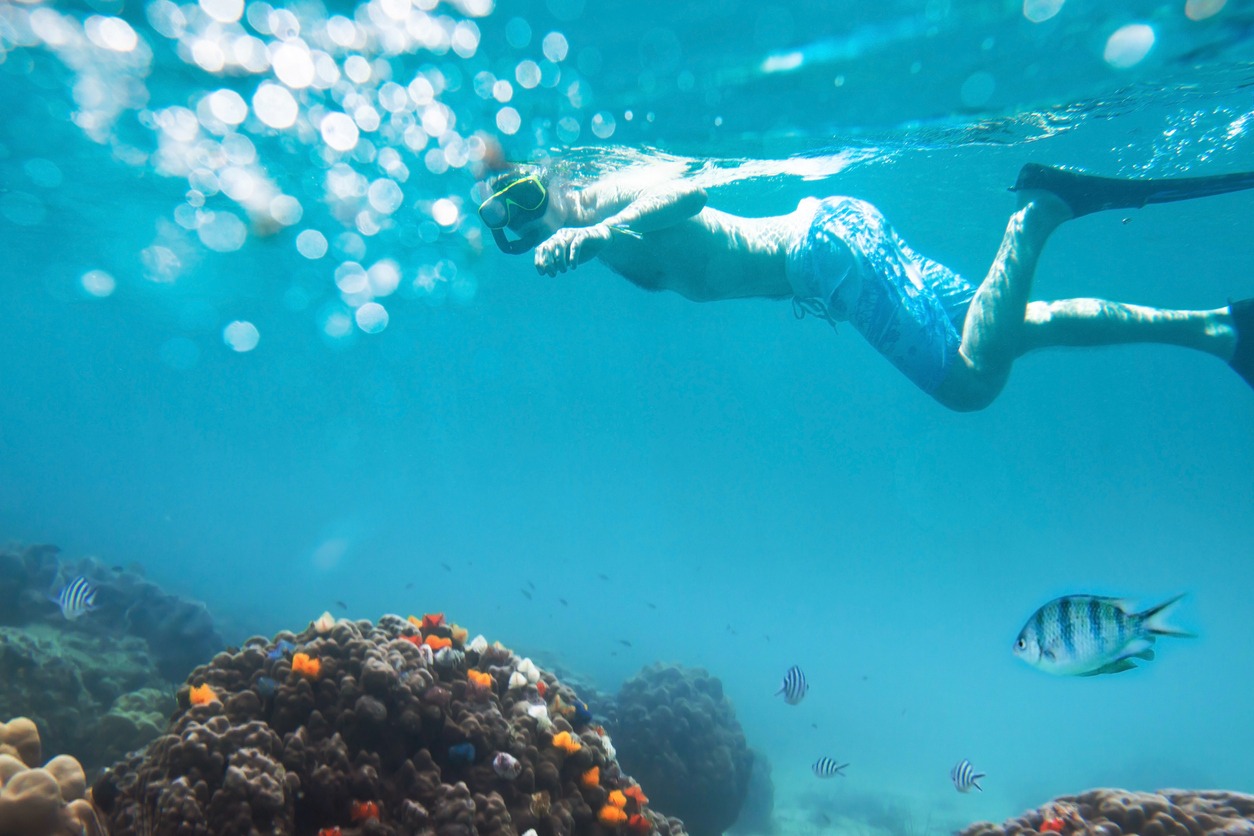
To avoid common snorkeling mistakes as a beginner, start by selecting well-fitting gear, especially a leak-free mask and comfortable fins. Practice breathing through your snorkel in shallow water before venturing out. Choose calm, shallow locations with good visibility and minimal currents. Familiarize yourself with ocean conditions and be aware of potential hazards. Maintain a relaxed pace while swimming, coordinating your breathing with your movements. Respect marine life by observing from a distance and never touching or disturbing the underwater environment. Stay alert to your surroundings and conserve energy by pacing yourself. These tips will help guarantee a safe and enjoyable snorkeling experience, but there's much more to explore about this fascinating activity.
Proper Gear Selection and Fit
Diving into the world of snorkeling starts with choosing the right gear. When selecting snorkeling equipment, resist the temptation to opt for the cheapest options. Low-quality gear can compromise your safety and comfort, potentially ruining your underwater experience.
Focus on finding a mask that fits properly. A well-fitting mask prevents leakage and fogging, guaranteeing clear visibility throughout your snorkeling journey. Take the time to adjust the straps and test the seal before entering the water.
For breathing ease, rent a dry snorkel equipped with a splash guard and purge valve. These features help keep water out of your snorkel and allow for quick clearing if any water does enter.
Don't overlook the importance of fins. Choose a pair that fits comfortably without causing chafing or discomfort. Ill-fitting fins can lead to blisters and cramps, cutting your snorkeling session short.
Before hitting the water, adjust all your gear to ensure ideal comfort and performance. This includes tightening straps, positioning the snorkel correctly, and securing your fins. By taking these steps, you'll be well-prepared to explore the underwater world with confidence and ease.
Mastering Breathing Techniques
With your gear properly fitted, it's time to focus on the fundamental skill of breathing while snorkeling. Proper breathing technique is vital for a comfortable and enjoyable experience underwater. Start by practicing in shallow water, taking slow, deep breaths through your mouth. Remember to relax and breathe naturally, as if you were on land.
Check if mask fits comfortably and ensure fins and snorkel are working properly before entering the water. When you're ready to swim and breathe simultaneously, focus on maintaining a steady rhythm. If water enters your snorkel, use the purge valve to clear it by exhaling forcefully. Here are some key tips to become proficient in your breathing technique:
- Keep your face relaxed and your jaw slightly open
- Breathe slowly and deeply through your mouth
- Practice clearing your snorkel regularly
- Stay calm if water enters your mask or snorkel
- Take breaks and surface if you feel uncomfortable
As you become more comfortable, try different breathing patterns to find what works best for you. Some snorkelers prefer shallow, frequent breaths, while others opt for deeper, slower breaths. Experiment with both to uncover your preferred method. Remember, efficient breathing allows you to conserve energy and enjoy longer snorkeling sessions, so take the time to perfect this essential skill.
Familiarizing With Snorkel Equipment
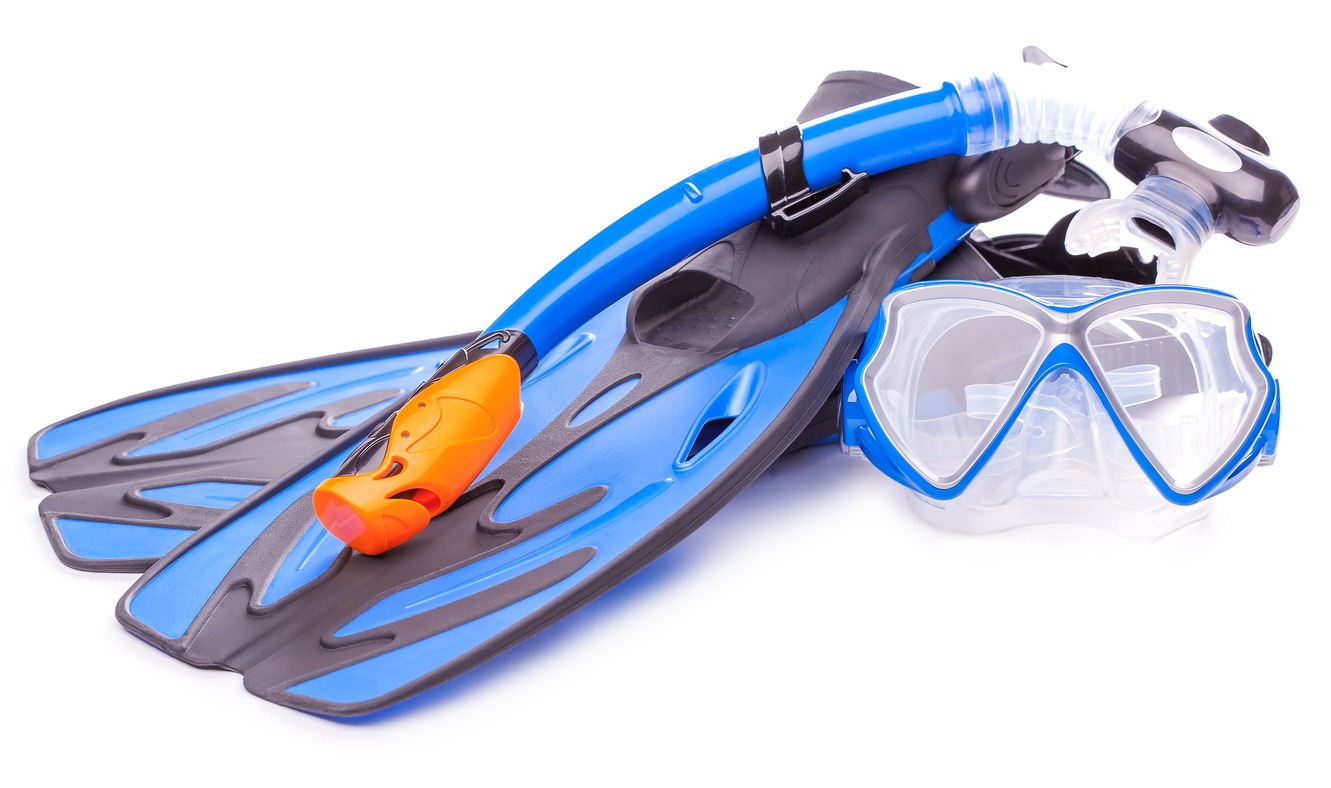
Nearly every successful snorkeling expedition begins with properly familiarizing yourself with the equipment. As a first-time snorkeler, you'll want to rent your gear well in advance. This allows ample time to guarantee a proper fit and make any necessary adjustments. When selecting your mask, prioritize a secure, leak-free seal. Your snorkel should feature a splash guard and purge valve for added comfort and safety.
Before venturing into open waters, it's pivotal to practice breathing through your snorkel in a controlled environment like a pool or calm waters. This will help you become comfortable with the sensation and build confidence. Familiarize yourself with fin usage and proper kicking techniques to improve your propulsion and efficiency in the water.
Take the time to identify and resolve any issues with your snorkel equipment before your excursion. Common problems include mask fogging and snorkel leakage. Addressing these beforehand will guarantee a smoother, more enjoyable experience. By thoroughly familiarizing yourself with your gear and practicing basic techniques, you'll set yourself up for a successful and memorable snorkeling journey.
Choosing Suitable Snorkeling Locations
Selecting the right location is crucial for a successful first-time snorkeling experience. As a beginner, you'll want to choose calm, shallow waters with minimal waves and currents. These conditions will help you feel more comfortable and confident as you explore the underwater world. Opt for snorkeling areas near the shore or with lifeguard supervision to guarantee added safety during your journey.
Before deciding on the best place to snorkel, research the marine life and underwater scenery at potential locations. This will help you set appropriate expectations and choose a spot that aligns with your interests. Avoid areas with high boat traffic or strong tidal flows, as these can pose challenges for inexperienced snorkelers.
Consider these factors when choosing your snorkeling location:
- Proximity to shore
- Water clarity and visibility
- Abundance of marine life
- Availability of rental equipment
- Accessibility and parking
For a truly memorable snorkeling experience, look into protected marine parks or sanctuaries. These areas often boast diverse aquatic ecosystems and offer the opportunity to observe a wide variety of fish and coral species. By selecting a suitable location, you'll set yourself up for an enjoyable and safe introduction to the world of snorkeling.
Understanding Ocean Conditions
Ocean conditions play a pivotal role in your snorkeling experience. To ensure your safety and enjoyment, you'll need to understand the power and unpredictability of ocean currents. These can easily sweep you away from your intended location, especially near coral reefs where currents can be stronger.
Be aware of wave patterns and surge, which can disorient you and make it difficult to maintain buoyancy. Research the tidal conditions of your chosen snorkeling site, as high and low tides significantly impact visibility and accessibility. Monitor weather forecasts for potential changes in wind, rain, or storm activity. High winds can create choppy surface conditions, making it challenging to swim and breathe through your snorkel.
Keep in mind the limitations of your snorkeling equipment. It may not provide adequate protection against strong underwater currents or rough seas. Always assess the ocean conditions before entering the water and trust your instincts. If conditions seem unfavorable, it's best to postpone your snorkeling adventure. By understanding and respecting ocean conditions, you'll be better prepared to safely explore the underwater world and avoid common beginner mistakes.
Practicing Safe Swimming Techniques
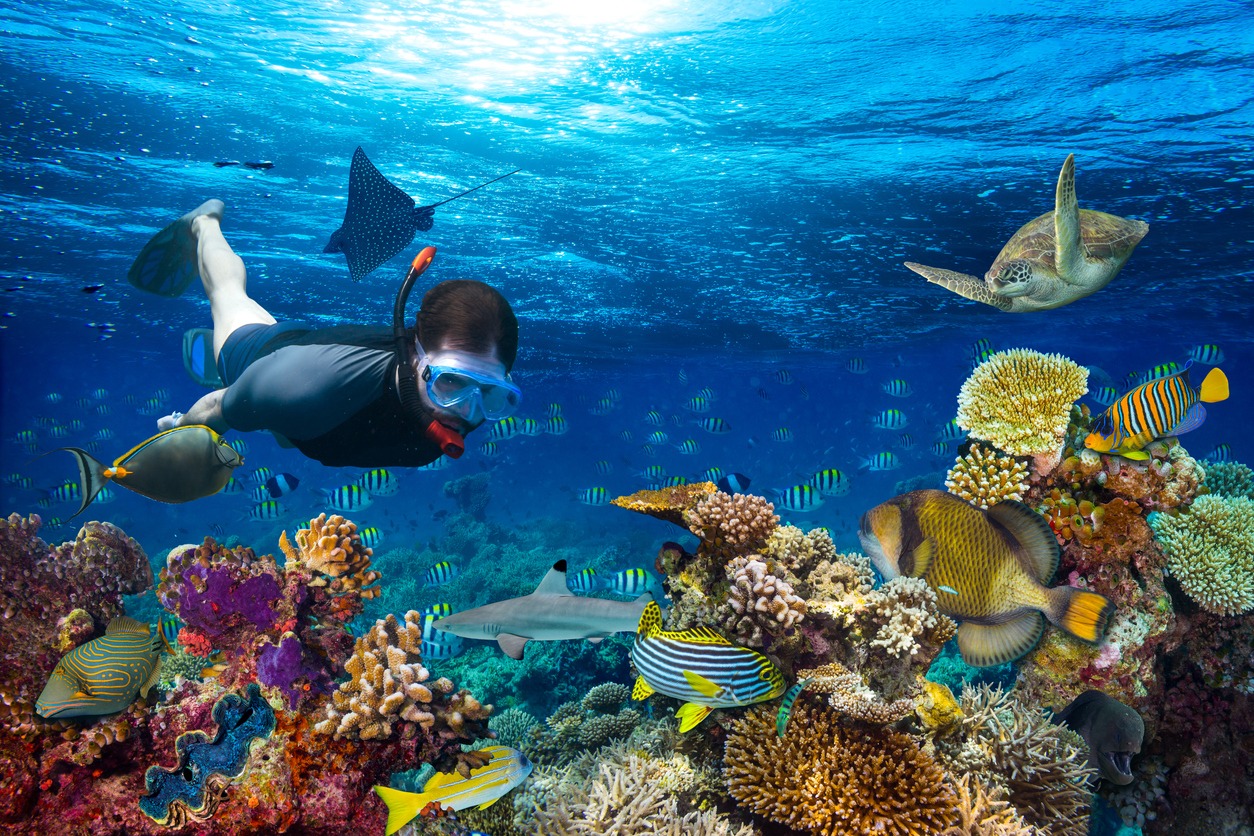
Commanding safe swimming techniques is critical for a pleasurable and protected snorkeling experience. As a beginner, you'll want to focus on efficient movements that conserve energy and allow you to enjoy your underwater quest. Start by maintaining a relaxed, slow pace to avoid early exhaustion. Coordinate your breathing with your swimming motions to optimize oxygen intake and minimize water entering your snorkel.
Understanding buoyancy and water dynamics will help you adjust your swimming techniques accordingly. Develop proper kicking and arm movements to propel yourself efficiently while minimizing fatigue. Remember to practice techniques like the "starfish float" to rest and regain energy during your snorkeling activity.
To improve your snorkeling experience and stay safe, keep these key points in mind:
- Maintain a slow, steady pace
- Breathe in sync with your movements
- Use proper kicking and arm techniques
- Practice floating to conserve energy
- Adjust your swimming style based on water conditions
Respecting Marine Life and Environment
As you investigate the underwater world, it's essential to remember that you're a visitor in a delicate ecosystem. Respecting marine life and environment is imperative for preserving the beauty of the underwater world for future generations. When snorkeling, avoid touching or standing on coral reefs, as even minor contact can damage these fragile structures. Be mindful of your fin movements to prevent accidentally kicking or disturbing marine life.
It's tempting to feed fish or other underwater creatures, but this practice can disrupt their natural behaviors and ecosystems. Instead, observe them from a respectful distance. Properly dispose of any waste and avoid littering, as plastics and other debris can harm marine environments and the creatures that call them home. Always respect designated marine protected areas and follow local guidelines to minimize your impact on sensitive habitats.
Maintaining Situational Awareness
Vigilance is key when exploring underwater environments. As a beginner snorkeler, maintaining situational awareness is vital for your safety and enjoyment. First, make sure you constantly scan the surrounding waters for potential hazards. Keep an eye out for marine life, boats, and strong currents that could pose a risk to your well-being.
Pay close attention to the direction and speed of ocean currents to avoid being swept away from your intended location. Always maintain visual contact with your boat or the shore to confirm you can easily return to safety. Be mindful of sudden changes in water depth, as standing on the seafloor could lead to injury. Additionally, stay aware of your position relative to other snorkelers to prevent collisions and respect their experience.
To enhance your situational awareness while snorkeling:
- Use a buddy system for added safety
- Regularly check your equipment
- Listen for unusual sounds underwater
- Take breaks to reassess your surroundings
- Learn to read water conditions and weather patterns
Pacing and Energy Conservation
While maintaining situational awareness is important, properly managing your energy is equally essential for a successful snorkeling experience. As a beginner, you might be tempted to swim vigorously, but this approach can quickly lead to exhaustion and compromise your safety. Instead, focus on adopting a relaxed, effortless pace during your snorkel trips.
Swimming slowly and steadily allows you to conserve energy and prevent early fatigue. Remember, snorkeling isn't about covering long distances or exerting too much effort; it's about enjoying the underwater scenery. By pacing yourself, you'll reduce the risk of rapid breathing, which can cause water to enter your snorkel and disrupt your experience.
Be mindful of the limitations of your snorkel breathing system and adjust your activity level accordingly. Take regular breaks to rest and recover, giving your body a chance to regain stamina. This approach will help you manage your energy levels effectively and guarantee a safe, enjoyable snorkeling excursion. By avoiding overexertion and maintaining a steady pace, you'll be able to spend more time exploring the underwater world without compromising your safety or comfort.

